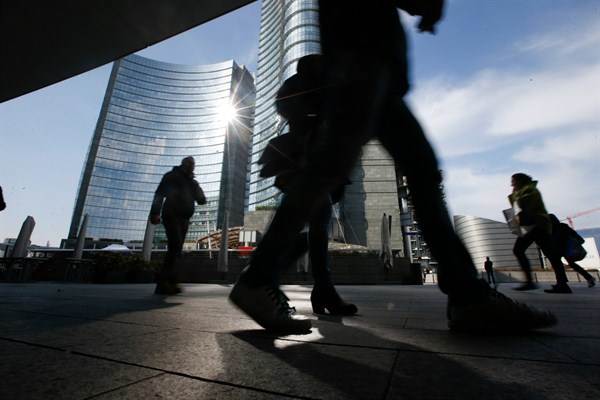Pity Matteo Renzi. Italy’s prime minister knows that his country’s troubled banking system has put its nascent economic recovery at risk. Yet Italy’s own financial weakness and European Union rules severely constrain his options. Not all the news is bad, though. Renzi’s financial team has come up with an imaginative response to the country’s bank problem with what they call the Atlante Fund, a rescue package to buy up risky loans. But the fund has its own limits, given the precariousness of Italy’s finances, and by implication Europe’s.
Past regulatory oversight or maybe just negligent private management have left Italian banks saddled with questionable loans, much worse than elsewhere in Europe. According to the European Central Bank, Italian banks, even after writing off some €85 billion (or $95 billion) in bad loans, still have €115 billion in loans to insolvent borrowers on their books. The Bank of Italy estimates that some €360 billion ($401 billion) in total loans will fail to be repaid in full. It classifies some 17 percent of all Italian bank loans as “nonperforming”—the worst rate in Europe, and more than twice the next worse rate in Spain, where the figure verges on 8 percent. In Europe’s stronger economies, such as Germany, the rate of questionable loans is just 2.7 percent.
The danger from Renzi’s viewpoint, and that of policymakers throughout Europe, is less that potential losses threaten bankruptcy, though they do, and more that the existence of so many bad loans could undermine depositors’ confidence in Italy’s banking system. Should such a loss of confidence become widespread, depositors would transfer money from Italian banks to banks elsewhere in the eurozone. The shift would starve Italian finance of liquidity, even among the better-managed banks, and almost surely put the economy back into a deep recession. And because Italy amounts to fully 16 percent of the eurozone’s overall gross domestic product, that prospect threatens Europe’s overall economy.

